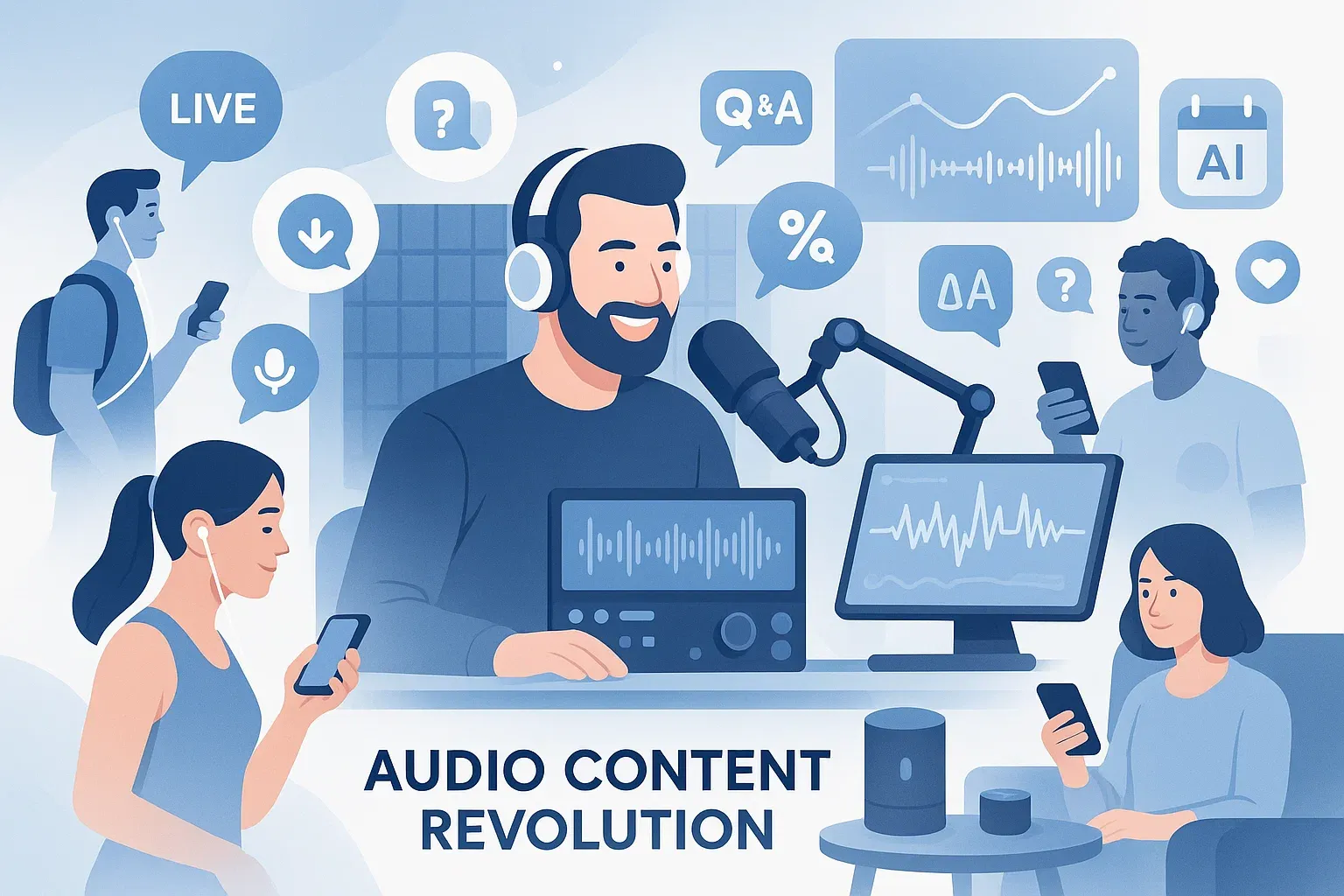The Audio Content Revolution: Why Podcasts and Social Audio Are Booming
Just a few years ago, podcasts were a niche passion. Today, they play a crucial role in content marketing, brand building, and community engagement. User behavior has changed, and so have technologies, creating the perfect conditions for an explosion of audio content.
People are overwhelmed by visuals and text. That’s exactly why the audio format has found its place—it offers a personal, natural, and relaxed way to connect with an audience. Podcasts are now a powerful tool not only for media outlets but also for businesses, consultants, and creators who want to be present in the daily lives of their listeners, during commutes, workouts, or household chores.
Social media quickly embraced this trend. Twitter (now X) and Clubhouse developed the idea of social audio—live voice-based content that connects people in real time. Discussions, Q&As, expert interviews, or casual conversations are now just as important as videos and image posts. And here’s the interesting part: engagement rate in voice formats can outperform typical posts, because voice carries emotion, presence, and authenticity.

The key to working effectively with audio content lies in the right tools. Platforms like Abev.ai let you manage sound content like any other post—complete with scheduling, distribution, and performance analytics. With integrated AI tools, you can automatically evaluate feedback, measurable listener responses, and even optimize the length, tone, or structure of your episodes based on your target group.
Podcasts aren’t just a trend. They’re part of a new marketing era where the brand literally becomes a voice. And social audio is a natural extension of that. For businesses, it’s an opportunity to communicate in a less formal, but much more human and effective way. For the audience, it’s a format that respects their time and attention.
If a company gets it right—finding a balance between content, value, and trust—it can use sound not only to reach its customers, but to truly get inside their heads... and stay there.